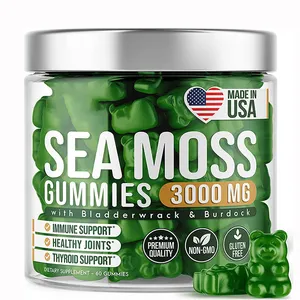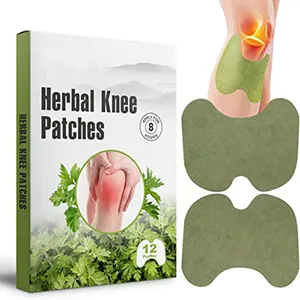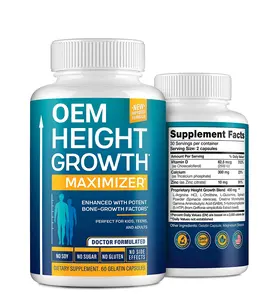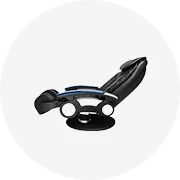Phổ biến trong ngành của bạn

Giàn cấu trúc sân khấu ngoài trời Giàn nhôm nặng giàn cho buổi hòa nhạc sân khấu sự kiện
393,50 US$ - 401,60 US$
Đơn hàng tối thiểu: 1 Mét
Vận chuyển mỗi chiếc: 428,95 US$


P1.9 p2.6 p2.9rental video tường hiển thị hiệu suất cao Độ phân giải giai đoạn ngăn xếp Màn hình LED cho nền âm nhạc lễ hội buổi hòa nhạc
185,00 US$ - 188,00 US$
Đơn hàng tối thiểu: 2 Cái


Marslite Xách Tay Dj Ánh Sáng Vũ Trường Thiết Lập Với Đứng Hệ Thống DJ Thiết Bị Gig Đảng Thanh Ánh Sáng Di Chuyển Gigibar Di Chuyển Cho Đám Cưới Sân Khấu
232,30 US$ - 265,10 US$
Đơn hàng tối thiểu: 2 Cái


Uponelight 230W DMX RGBW Đèn sân khấu âm thanh kích hoạt DJ mệnh ánh sáng
60,00 US$ - 143,00 US$
Đơn hàng tối thiểu: 2 Hộp
Vận chuyển mỗi chiếc: 36,44 US$


Thiết Kế Mới 120W Hiệu Quả Sân Khấu Ánh Sáng LED Động Bóng Với Tời Nâng Ánh Sáng Cho Disco Âm Nhạc Buổi Hòa Nhạc Nhà Hát Đám Cưới
49,00 US$ - 100,00 US$
Đơn hàng tối thiểu: 2 Cái
Vận chuyển mỗi chiếc: 31,61 US$


Cho bbs Trung Quốc Nhà cung cấp 15 16 17 18 19 inch 5*114.3/120 món ăn sâu xe rim bánh xe đua hiệu suất cho bbs LM Jerry Huang
45,00 US$ - 58,00 US$
Đơn hàng tối thiểu: 4 Cái

Hiệu suất cao gt3576dl turbo tăng áp 724671-0001 8976019740 Turbo forisuzu cháy xe tải 6hk1 động cơ từ Vô Tích booshiwheel
100,00 US$ - 350,00 US$
Đơn hàng tối thiểu: 1 Bộ

Đầu lớn Robot phù hợp với hiệu suất cho bữa tiệc và đám cưới
320,00 US$ - 400,00 US$
Đơn hàng tối thiểu: 2 Cái
Vận chuyển mỗi chiếc: 312,60 US$

Trang phục khiêu vũ trữ tình người phụ nữ nhảy múa cực Váy Cô Gái sân khấu khiêu vũ mặc màu tím để biểu diễn sân khấu
Sẵn sàng vận chuyển
91,00 US$ - 107,00 US$
Đơn hàng tối thiểu: 1 Cái
Vận chuyển mỗi chiếc: 7,00 US$

TD04 TD04H TD04L TD04HL Nâng Cấp Hiệu Suất Chuyển Tiếp Tăng Áp Bộ Dụng Cụ Sửa Chữa/Bộ Dụng Cụ Turbo/Bộ Dụng Cụ Xây Dựng Lại Turbo Cho Superback
Sẵn sàng vận chuyển
21,00 US$
Đơn hàng tối thiểu: 1 Cái
Vận chuyển mỗi chiếc: 10,43 US$

Bán Buôn Chính Hãng Gốc Contimental Timing Belt CT1141 Chất Lượng Cao Chuyên Nghiệp Giá Tốt Nhất Hiệu Suất Cao
Sẵn sàng vận chuyển
5,00 US$ - 5,50 US$
Đơn hàng tối thiểu: 1 Bộ
Vận chuyển mỗi chiếc: 19,38 US$

Đối Với Nissan GTR R35 Intake Manifold Được Cài Đặt Trực Tiếp Và Hiệu Suất Cao
450,00 US$ - 950,00 US$
Đơn hàng tối thiểu: 1 Bộ

Dành cho người lớn RGB nhấp nháy LED Robot trang phục ánh sáng với mũ bảo hiểm cho hiệu suất sân khấu và mặc lấy cảm hứng từ kryoman và David guetta
Sẵn sàng vận chuyển
600,00 US$ - 620,00 US$
Đơn hàng tối thiểu: 1 Gói
Vận chuyển mỗi chiếc: 100,00 US$

Bánh xe hợp kim rèn 18-22 inch hiệu suất cao được đánh bóng 5x112 5x120 5x114.3 PCD điều kiện mới-cho xe ô tô
175,00 US$ - 205,00 US$
Đơn hàng tối thiểu: 4 Cái

Defus áp lực cao hiệu suất cao 630cc 650cc 1000cc EV1 phun nhiên liệu vòi phun cho fi114961 107961 autoparts kim phun nhiên liệu
7,00 US$ - 9,00 US$
Đơn hàng tối thiểu: 4 Cái

Hiệu Suất Cao GT35 GTX3582R Bóng Kép Mang Một/R.82 V Ban Nhạc Turbo Tăng Áp
200,00 US$ - 399,00 US$
Đơn hàng tối thiểu: 1 Cái

Bộ 3 Món Biểu Diễn Múa Bụng Đẹp Thời Trang Chuyên Nghiệp
Sẵn sàng vận chuyển
12,88 US$
Đơn hàng tối thiểu: 2 Bộ
Vận chuyển mỗi chiếc: 10,97 US$

Chuyên Nghiệp Ba Lê Tutu Trẻ Em Trang Phục Trẻ Em Ruffle Ăn Mặc Cho Cô Gái Ba Lê Tutu Váy OPP Túi Hiệu Suất 100% Cotton 110-160Cm
6,83 US$
Đơn hàng tối thiểu: 100 Cái

Bơm Nhiên Liệu Diesel HEP-02A Hiệu Suất Cao Bơm Nhiên Liệu Điện Áp Thấp Nội Tuyến
2,80 US$ - 3,50 US$
Đơn hàng tối thiểu: 10 Cái

Bánh Xe Hợp Kim Rèn So Le Hiệu Suất Cao 16 17 18 19 20 21 22 23 24 5X120 5X112 5X130 5x114.3
400,00 US$ - 600,00 US$
Đơn hàng tối thiểu: 4 Cái

Bộ Phận Nén Khí Tăng Áp HX40 Hiệu Suất Cao Dành Cho Phụ Tùng Nhà Turbo
50,00 US$ - 300,00 US$
Đơn hàng tối thiểu: 1 Bộ

Cho bbs Trung Quốc Nhà cung cấp 15 16 17 18 19 inch 5*114.3/120 món ăn sâu xe rim bánh xe đua hiệu suất cho bbs LM Jerry Huang
45,00 US$ - 58,00 US$
Đơn hàng tối thiểu: 4 Cái

Hiệu Suất Cao Màu Đen Màu Đỏ Màu Xanh 1/8 "3Mm Linh Hoạt Silicone Cao Su Chân Không Không Khí Nước Hose Racing Turbo Intake Ống Đường Ống Ống
1,26 US$ - 2,90 US$
Đơn hàng tối thiểu: 50 Mét

LQ027 Váy Đen Latin Bán Chạy Với Kim Cương Đỏ Dành Cho Nữ Biểu Diễn
39,00 US$ - 49,00 US$
Đơn hàng tối thiểu: 1 Cái

N54 n54b30 E90/91/92/93 hợp kim 4340 hiệu suất X6 (E71) 3/8
360,00 US$ - 480,00 US$
Đơn hàng tối thiểu: 1 Bộ
Vận chuyển mỗi chiếc: 32,12 US$

Vành Bánh Xe Hợp Kim Xe Khách 18 19 20 Inch 5*112 Cho Audi RS Performance Cho Audi A3 A5 A6 A7 S3 S4 S5 S6 RS4 RS5
85,00 US$ - 95,00 US$
Đơn hàng tối thiểu: 4 Cái

0221603006 Cho Vw Jetta Hiệu Suất Cao 032905106 032905106b Cuộn Dây Đánh Lửa Cho Skoda Golf 1.8
Sẵn sàng vận chuyển
7,38 US$ - 7,72 US$
Đơn hàng tối thiểu: 2 Cái
Vận chuyển mỗi chiếc: 12,59 US$

FS144 18Inch Rp1f Hiệu Suất 5*114.3 Bánh Xe Hợp Kim Bạc Cho Thể Thao Và Đua Xe Bánh Xe Mags Vành
Sẵn sàng vận chuyển
66,00 US$ - 85,00 US$
Đơn hàng tối thiểu: 4 Cái
Vận chuyển mỗi chiếc: 3,50 US$

Funtoys màn hình kỹ thuật số LED Walker Robot phù hợp với LED bên Robot trang phục dành cho người lớn quần áo sân khấu trang phục dạ quang cho khiêu vũ hiệu suất
350,00 US$ - 580,00 US$
Đơn hàng tối thiểu: 2 Cái

Trang Phục Múa Bollywood Ấn Độ Mới 2018 Để Biểu Diễn
Sẵn sàng vận chuyển
39,00 US$ - 58,00 US$
Đơn hàng tối thiểu: 1 Bộ
Vận chuyển mỗi chiếc: 18,04 US$

Orange sequin Lycra vải Jazz/tap Dance mặc với tutu váy ba lê không tay trang phục cho hiệu suất
25,00 US$ - 35,00 US$
Đơn hàng tối thiểu: 2 Cái
Vận chuyển mỗi chiếc: 12,47 US$

100% Trung Quốc Bất Lụa Mạng Che Mặt Phổ Biến Gradient Màu Bụng Khiêu Vũ Phụ Kiện Cho Người Lớn Cho Hiệu Suất Sử Dụng
Sẵn sàng vận chuyển
10,00 US$ - 12,00 US$
Đơn hàng tối thiểu: 2 Cái
Vận chuyển mỗi chiếc: 13,67 US$

Bộ Đồ Robot LED Pixel Thông Minh Đủ Màu Trang Phục Quần Áo Sàn Tập Đi Trang Phục Áo Khoác Đèn LED Dạ Quang Biểu Diễn Nhảy Múa Sân Khấu
Sẵn sàng vận chuyển
299,99 US$ - 349,99 US$
Đơn hàng tối thiểu: 2 Cái
Vận chuyển mỗi chiếc: 166,82 US$

Bánh Đà Hiệu Suất Cao 6HE1 6HH1 8943938491 8-94393849-1 Cho Isuzu FSR FSS FTR FVR
45,00 US$ - 59,00 US$
Đơn hàng tối thiểu: 2 Cái

Xuất Khẩu 24141094 Xe Tăng Nhiên Liệu 3 Lít Bajaj Tuk Xe Ba Bánh Phụ Tùng Hiệu Suất Cao Chất Lượng Tốt Và Giá Nhà Máy
0,50 US$ - 35,00 US$
Đơn hàng tối thiểu: 200 Cái

Hiệu Suất Cao Tùy Chỉnh Giả Mạo Hợp Kim Xe Bánh Xe 17/18/19/20/21/22 Inch Bền 50Mm/25Mm ET Cho BMW Mercedes Land Rover
120,00 US$ - 230,00 US$
Đơn hàng tối thiểu: 4 Cái

MN rèn bánh xe chính xác Advan GT cho hiệu suất từ 18 "x8.5 đến 21" 350Z đến 86-Có sẵn trong 4x100 5x100 5x112 5x120
188,00 US$ - 258,00 US$
Đơn hàng tối thiểu: 4 Cái
Vận chuyển mỗi chiếc: 39,93 US$


585hp Is38 Turbo Ea888 Gen3 Performance For Racing VWw Golf 7 GTI R Polo Mk7 Audi A3 S1 S3 2.0 1.8T Bộ Tăng Áp Chra
365,00 US$ - 378,00 US$
Đơn hàng tối thiểu: 1 Cái
Vận chuyển mỗi chiếc: 23,38 US$

Vòi Phun Hiệu Suất Tốt Cho Xe Hơi Và Xe Tải DLLA145P394
10,00 US$ - 12,00 US$
Đơn hàng tối thiểu: 1 Cái
Vận chuyển mỗi chiếc: 16,71 US$
Các danh mục hàng đầu
Giới thiệu về thực hiện
Ngày nay, thực hiện không còn là điều mới mẻ đối với những người bình thường và không còn bị coi là điều cấm kỵ khi sử dụng. Nếu bạn đang tìm kiếm niềm vui áp chót đó, bạn phải kiểm tra sự bao la. Bộ sưu tập thực hiện tại Alibaba.com. Những gợi cảm và cong. thực hiện đáng giá từng xu và chắc chắn làm cho đêm đó trở nên đặc biệt đối với bạn. Những con búp bê này có ngoại hình giống như thật, bắt đầu từ tóc đến ngón chân theo mọi nghĩa.
Cho dù bạn là một người cô đơn đang tìm kiếm một người bạn đời như cuộc sống hay một cặp vợ chồng muốn thêm gia vị cho cuộc sống của họ, bạn đều có thể sử dụng chúng . thực hiện để đốt cháy ngọn lửa đó. Những ngoạn mục. thực hiện có thể tùy chỉnh theo mong đợi của bạn. Những điều tuyệt vời. thực hiện có sẵn ở cả phiên bản dành cho nam và nữ và được làm từ silicone cấp y tế để sử dụng an toàn. Hãy sở hữu ngay bây giờ và tận hưởng một đêm đam mê và cháy bỏng.
Alibaba.com cung cấp những điều tuyệt vời này. thực hiện ở mọi hình dạng cơ thể, kích thước và sắc tộc. Dù yêu cầu của bạn đối với. thực hiện, bạn có thể tải tất cả chúng trên trang web. Những cái này. thực hiện được tạo hình bởi những người thợ thủ công giỏi nhất và mọi chi tiết phức tạp đều được kiểm tra kỹ lưỡng. Những con búp bê này có mắt, tóc, móng tay và tất cả các bộ phận cơ thể khác tương tự như người thật.
Alibaba.com cung cấp nhiều loại. thực hiện có thể giúp bạn mua các sản phẩm phù hợp với ngân sách và các yêu cầu khác của bạn. Các sản phẩm này an toàn để sử dụng, được chứng nhận và thân thiện với môi trường trong tự nhiên. Đơn đặt hàng OEM có sẵn trên các sản phẩm này.
Cho dù bạn là một người cô đơn đang tìm kiếm một người bạn đời như cuộc sống hay một cặp vợ chồng muốn thêm gia vị cho cuộc sống của họ, bạn đều có thể sử dụng chúng . thực hiện để đốt cháy ngọn lửa đó. Những ngoạn mục. thực hiện có thể tùy chỉnh theo mong đợi của bạn. Những điều tuyệt vời. thực hiện có sẵn ở cả phiên bản dành cho nam và nữ và được làm từ silicone cấp y tế để sử dụng an toàn. Hãy sở hữu ngay bây giờ và tận hưởng một đêm đam mê và cháy bỏng.
Alibaba.com cung cấp những điều tuyệt vời này. thực hiện ở mọi hình dạng cơ thể, kích thước và sắc tộc. Dù yêu cầu của bạn đối với. thực hiện, bạn có thể tải tất cả chúng trên trang web. Những cái này. thực hiện được tạo hình bởi những người thợ thủ công giỏi nhất và mọi chi tiết phức tạp đều được kiểm tra kỹ lưỡng. Những con búp bê này có mắt, tóc, móng tay và tất cả các bộ phận cơ thể khác tương tự như người thật.
Alibaba.com cung cấp nhiều loại. thực hiện có thể giúp bạn mua các sản phẩm phù hợp với ngân sách và các yêu cầu khác của bạn. Các sản phẩm này an toàn để sử dụng, được chứng nhận và thân thiện với môi trường trong tự nhiên. Đơn đặt hàng OEM có sẵn trên các sản phẩm này.











